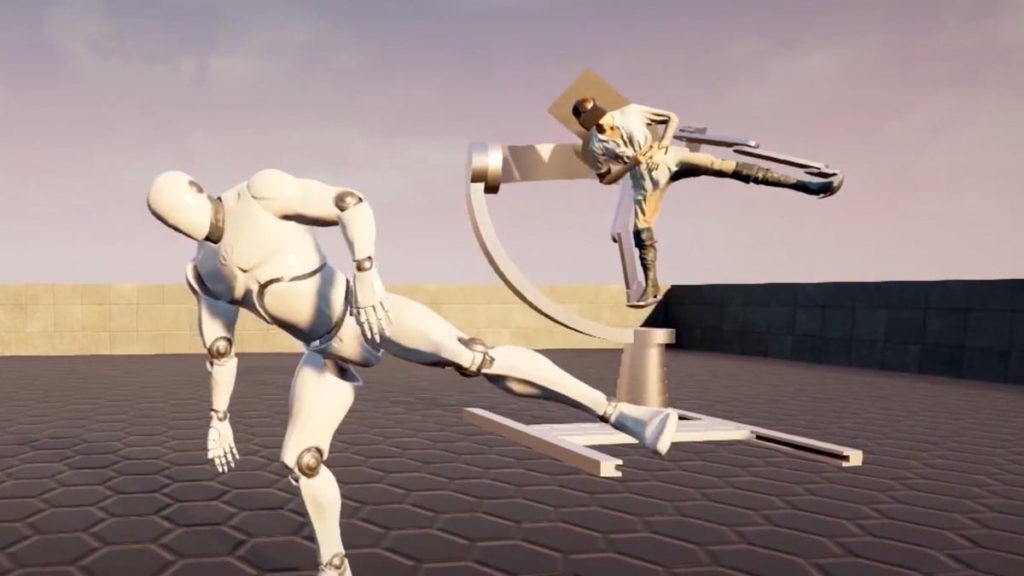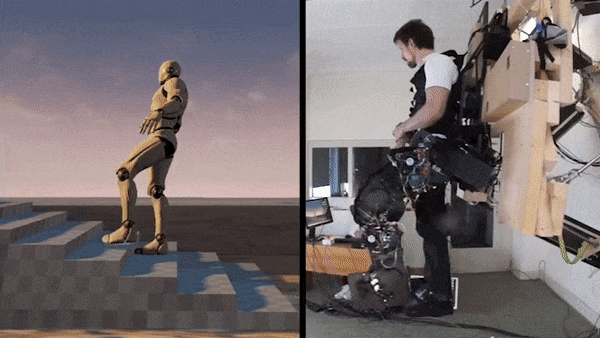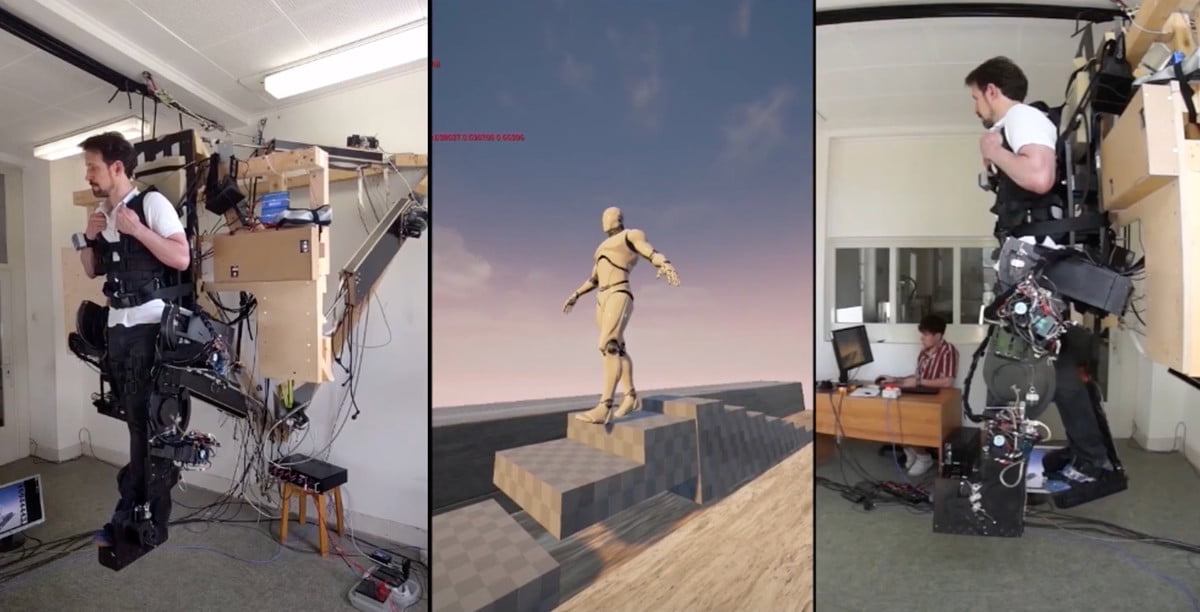This German lower-body exosuit aims to revolutionize man-machine interfaces.
Despite the considerable advances in immersive technology these past few years, simulating physical locomotion in a virtual environment remains one of the most difficult aspects of developing interactive VR content. And while many of these omnidirectional treadmills, such as the Omni One and KAT WALK C allow you to physically walk, run, and jump in VR, most lack any form of haptic feedback.
German entrepreneur and inventor Marcel Reese aims to rectify this issue using the power of exoskeleton technology. Referred to as Holotron, this German exosuit project utilizes a complex lower-body device to simulate physical touch and force-feedback while navigating virtual environments. Holotron works by sensing your movements and replicating said actions in VR using “virtual muscles.”
“The problem I tried to solve with the Holotron is how to create a virtual world that is indistinguishable from real life,” said Reese while speaking to Digital Trends. “That can also be understood as finding the perfect man-machine interface where you control the avatar by doing what you would normally do.”

“The [fine] details of … interaction with the virtual environment, like the texture of a rough piece of wood or the bumps of an avocado, cannot [yet] be felt realistically by the user,” he said. “In the beginning, that is not required … But one can add high-resolution tactile displays all over the body to have the user feel the very details of every object he or she touches. Later add-ons will include this and also thermal displays, smell and taste.”
In addition to further enhancing interactive VR experiences, Reese believes Holotron could serve a variety of purposes, including the operation of telepresence robots, allowing you to interact with objects and even people remotely over great distances.

“There are many applications to remotely operated humanoid robots,” Reese said. “This includes hazardous environments, remote industrial repairs, remote medical services, or simply remote work in general, where anyone could work anywhere instantly. A lot of common travel and commute could be reduced by using tele-operated humanoid robots.”
According to Digital Trends, Holotron is still in its early stages, though Reese has confirmed plans for an eventual commercial release.
Image Credit: Holotron
The post Holotron And The Pursuit Of The Perfect VR Exoskeleton appeared first on VRScout.




